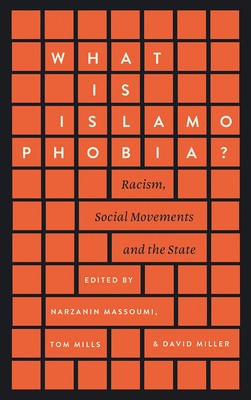
- We will send in 10–14 business days.
- Publisher: Pluto Press (UK)
- ISBN-10: 0745399584
- ISBN-13: 9780745399584
- Format: 13.7 x 21.8 x 2.8 cm, kieti viršeliai
- Language: English
- SAVE -10% with code: EXTRA
What is Islamophobia? (e-book) (used book) | bookbook.eu
Reviews
Description
As racist undercurrents in many western societies become manifestly entrenched, the prevalence of Islamophobia - and the need to understand what perpetuates it - has never been greater. Critiquing the arguments found in notionally left accounts and addressing the limitations of existing responses, What is Islamophobia? demonstrates that Islamophobia is not simply a product of abstract, or discursive, ideological processes, but of concrete social, political and cultural actions undertaken in the pursuit of certain interests. The book centres on what the editors refer to as the 'five pillars of Islamophobia': the institutions and machinery of the state; the far right, incorporating the counterjihad movement; the neoconservative movement; the transnational Zionist movement; and assorted liberal groupings including the pro-war left, and the new atheist movement. The book concludes with reflections on existing strategies for tackling Islamophobia, considering what their distinctive approaches mean for fighting back.
EXTRA 10 % discount with code: EXTRA
The promotion ends in 22d.22:33:00
The discount code is valid when purchasing from 10 €. Discounts do not stack.
- Publisher: Pluto Press (UK)
- ISBN-10: 0745399584
- ISBN-13: 9780745399584
- Format: 13.7 x 21.8 x 2.8 cm, kieti viršeliai
- Language: English English
As racist undercurrents in many western societies become manifestly entrenched, the prevalence of Islamophobia - and the need to understand what perpetuates it - has never been greater. Critiquing the arguments found in notionally left accounts and addressing the limitations of existing responses, What is Islamophobia? demonstrates that Islamophobia is not simply a product of abstract, or discursive, ideological processes, but of concrete social, political and cultural actions undertaken in the pursuit of certain interests. The book centres on what the editors refer to as the 'five pillars of Islamophobia': the institutions and machinery of the state; the far right, incorporating the counterjihad movement; the neoconservative movement; the transnational Zionist movement; and assorted liberal groupings including the pro-war left, and the new atheist movement. The book concludes with reflections on existing strategies for tackling Islamophobia, considering what their distinctive approaches mean for fighting back.


Reviews